Most Asked
The most commonly asked questions about climate change from young people in Tasmania.
Theme Questions
This is an excellent question, and one of the questions most students want an answer to. You can be someone who takes climate action!
Each of us can act individually (on our own) and collectively (together with others) to act on climate. We know, from scientific evidence, that climate change cannot be stopped and is happening already – but it can be reduced and slowed down. People today and into the future (including you) can make changes and decisions that will greatly reduce climate change and its impacts.
Some of these decisions are happening on a systemic scale - they the really big changes we need to reduce emissions from industries and electricity generation.
For example, world leaders are meeting together at COP26 (which is the UN Climate Change Conference of the Parties) to discuss pathways to do this – in particular, to ensure that global temperature rises do not exceed 1.5 degrees, and how we can adapt to climate change impacts into the future. If we can manage to greatly reduce global greenhouse gas emissions (such as carbon dioxide) we can limit climate change.
You might wonder how young people can influence big changes like this? By using your voices! Young people are involved in many groups and movements such as the School Strikes for Climate that have already made a difference to the way world leaders think about climate action.
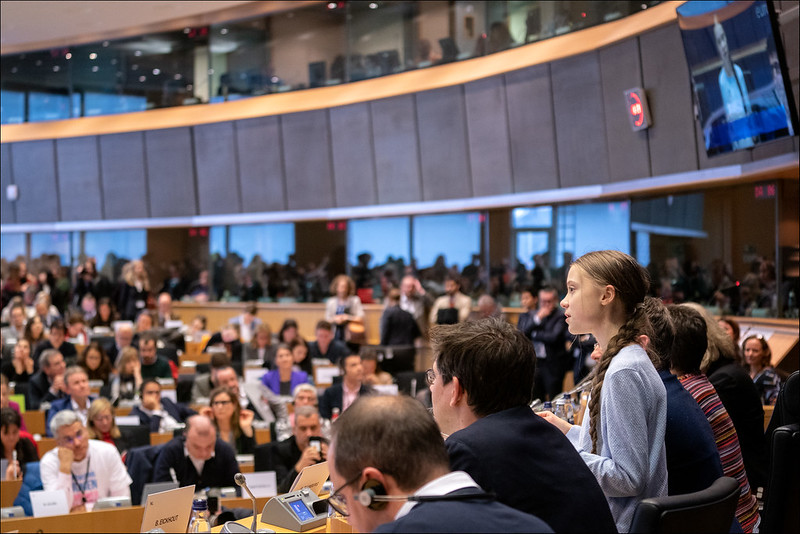
At a smaller scale, all of us can do something to make positive changes and have an impact on tackling climate change. Some people can do more and less than others, and that is OK - it’s great actually because lots of small changes can lead to big impact. In everyday life, there’s lot that you might be able to do, for example:
- You can aim to take the bus or walk, or ride your bike to school more.
- You could eat more vegetables, and eat meat less often (maybe even encourage your family and friends to have ‘meat free Mondays’?!). Plant-based foods generally produce fewer greenhouse gas emissions and they also require less energy, land, and water usage.
- You can speak up! Tell your friends and family about climate change and the small changes each of us can do to make a difference - remembering that we all have different abilities to make these changes, big and small.
There are a lot more ideas you can check out on our 'What can I do?' page.
Climate change can directly affect animals: for example, if they are used to particular temperatures and things get warmer, if they can’t move (like corals) then things can get very uncomfortable, and you have probably heard about bleaching events on the Great Barrier Reef.
If they can move, they might be able to move into other areas – shift their natural range – like sea urchins coming down from coastal Australian waters along the east coast of Tasmania. Another example is temperate species moving into polar regions, and this is being seen in North Atlantic fishes (like mackerel) expanding into the Arctic. But the ranges of polar species like Arctic cod are getting smaller which is important for all those marine mammals that like to eat this fatty fish.
Climate change can make really big changes to key habitats: the place where animals live. This is most obvious in icy places – the Arctic and Antarctic. One animal everyone thinks is very special is the polar bear. Changes in the timing, duration and thickness of Arctic sea ice and snow are linked to changes in where they are living, where they make their dens for pupping, where they forage and what they’re eating, as well as how far they have to swim (instead of travelling over ice). Some populations are declining but others are doing okay.
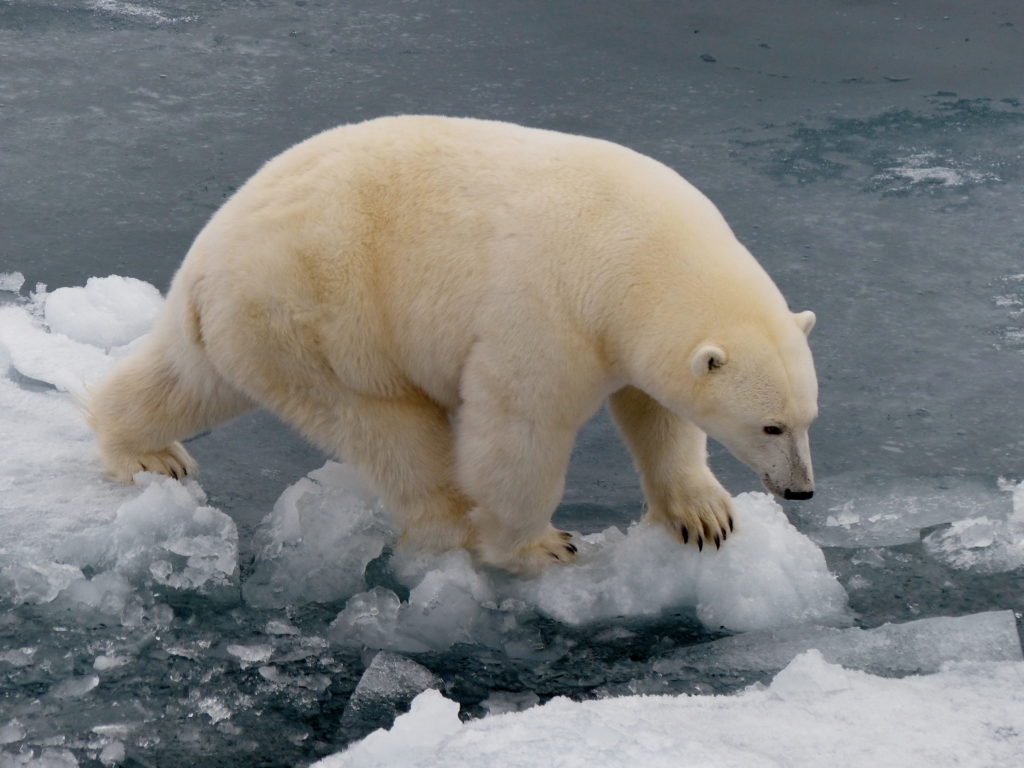
In the Antarctic, the famous Emperor penguins breed and raise their chicks on the fast ice, which is stable sea ice that is attached to land. If sea ice breaks up too early, they lose their chicks, so they are really vulnerable to sea ice loss with climate change without major cuts in carbon pollution. Their situation is spearheading an urgent call for stronger climate action and protections for these penguins. If nations meet the Paris Climate Agreement’s 1.5 degrees Celsius target, the penguins’ population should stabilize by 2100.
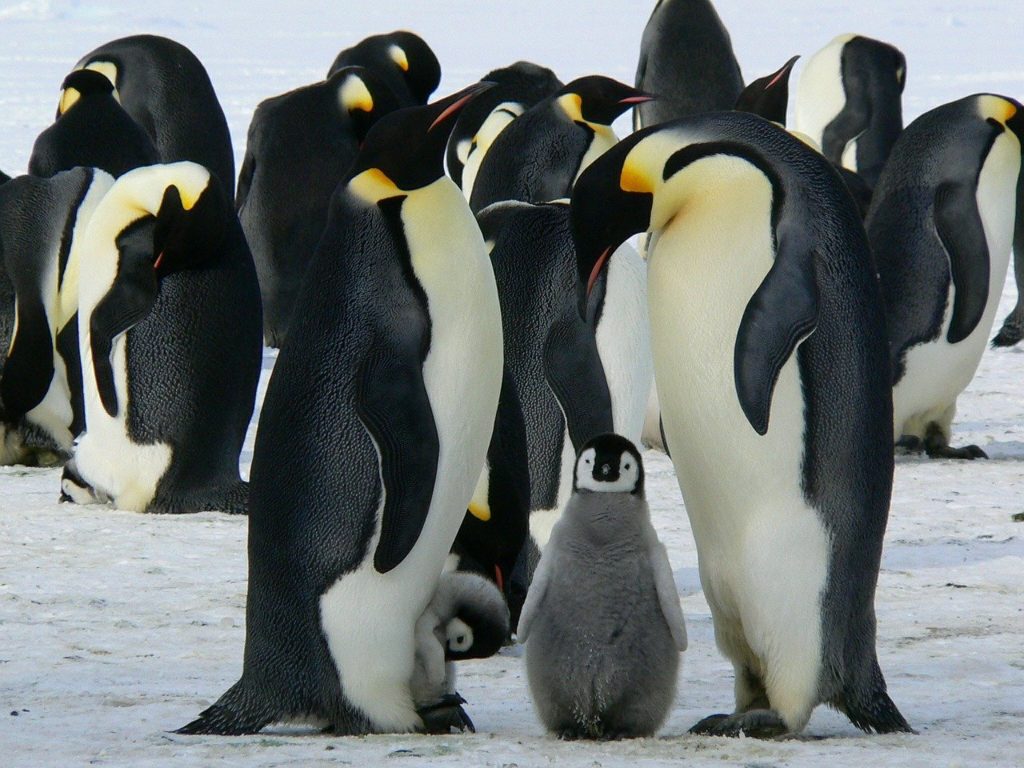
Different patterns are being seen in different penguin species – for example on the Antarctic Peninsula the gentoo penguins has increased its population size and expanded the area it occupies over the last 20 years.
Climate change can also alter weather patterns – for example, making intense storms more frequent – more rainfall which can affect say shy albatross trying to raise their chicks on their breeding islands in Bass Straight north of Tasmania. These birds build nests out of mud and plant material, and bad conditions affect if chicks survive. Scientist are trying to help with supplying special concrete and mudbrick nests.
So, we can see from these examples that some animals might be colonising new areas while other species are losing out. The more we can limit climate change impacts the more we can help those species that have evolved really special life cycles to thrive in their natural environments.
Plants and animals are threatened by lots of things like habitat loss from land clearing, or being hunted, fished or harvested. On top of these pressures are climate change impacts.
Because there are so many interacting threats to biodiversity, we haven’t yet attributed many species’ extinctions only to climate change. Species that we have lost to date from climate change are species that occur only in one place, so they are very rare, and those places are exposed to immediate climate impacts such as flooding and sea level rise.
The Bramble Cay Melomys was an Australian rodent that occurred only on one island in the Torres Strait. In 2016, it became the first recorded species extinction attributed to human induced climate change. The small sand island it lived on was affected by sea level rise and storm events. The extinction record by the State of Queensland said that extinction was caused by "ocean inundation of the low-lying cay, very likely on multiple occasions, during the last decade, causing dramatic habitat loss and perhaps also direct mortality of individuals" (1). There are likely other species that have been lost to a similar fate.
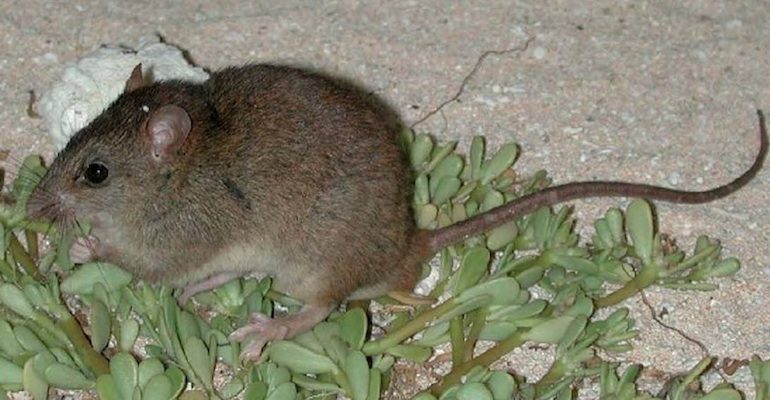
The IUCN Red List of species is the best source for understanding global threats to species. Expert have listed climate change as a cause of decline for 19% of all species listed as near threatened or threatened. Climate change impacts that threaten species include increases in storms, flooding, extreme temperatures, drought, and sea level rise.
As an example – Hooded seals are a species threatened directly by climate change. Their population has dropped in abundance by 90% in the northeastern Atlantic Arctic over the last 20 years. This decline is attributed to loss of sea ice which has reduced the number of places available for resting and raising pups.
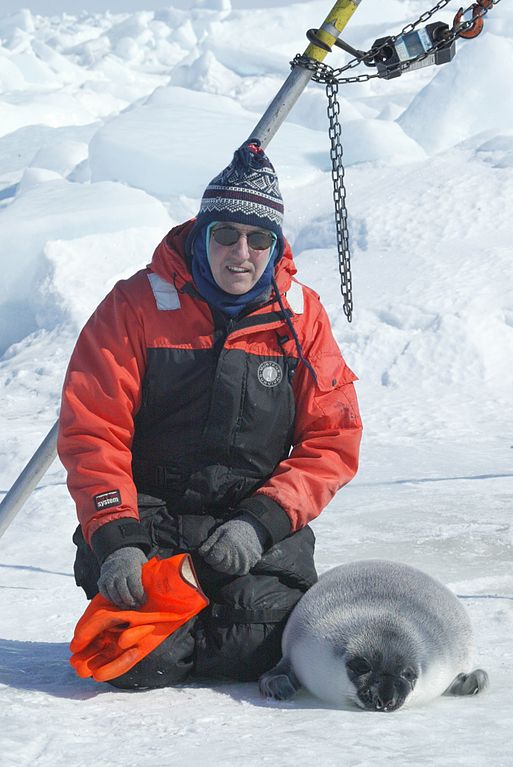
Looking into the future – One study estimated that if we follow our current, business-as-usual trajectory of climate change, which is projected to lead to a 4.3°C temperature rise, climate change would threaten one in six species (16%). This could as much as double our extinction rates.
This is one of many reasons why people are calling for governments to limit climate change to 1.5°C, by ‘decarbonising’ our economy – or stopping emissions of CO2. If we do this, we can reduce the rates at which plants and animals become extinct.
There have been quite a few questions asking which countries and which places in the world are most affected by climate change, and about which countries are getting hotter, quicker.
As you know, the effects of climate change are different everywhere. Overall, we are seeing the planet heating, but this has different impacts in different places.
Did you know that climate change is also affecting where rain falls? How windy it is? When and where cyclones occur? There is nowhere on Earth that climate change isn’t having an impact, but the ways that climate change affects different countries depends on lots of different factors, including their geographical location, their exposure to different types of change, the sensitivity of the environment to change, and the capacity of their human population to adapt.
Understanding which is the most affected country depends on the risk criteria you are looking at.
If you wanted to know where the highest number of people are affected by climate change right now, you might think of countries affected by more intense extreme weather events, like Pakistan, Haiti, and the Philippines.
Also greatly impacted are countries with large cities in south-east Asia like Indonesia, and Bangladesh, which are losing coastal land with sea level rise, or countries in Africa affected by drought, like Kenya. If you wanted to know which countries are being faced with becoming unliveable or being lost altogether, you might think of countries in the Middle East reaching 50°C more often, or low-lying islands like Tuvalu, the Torres Strait Islands, and the Maldives.
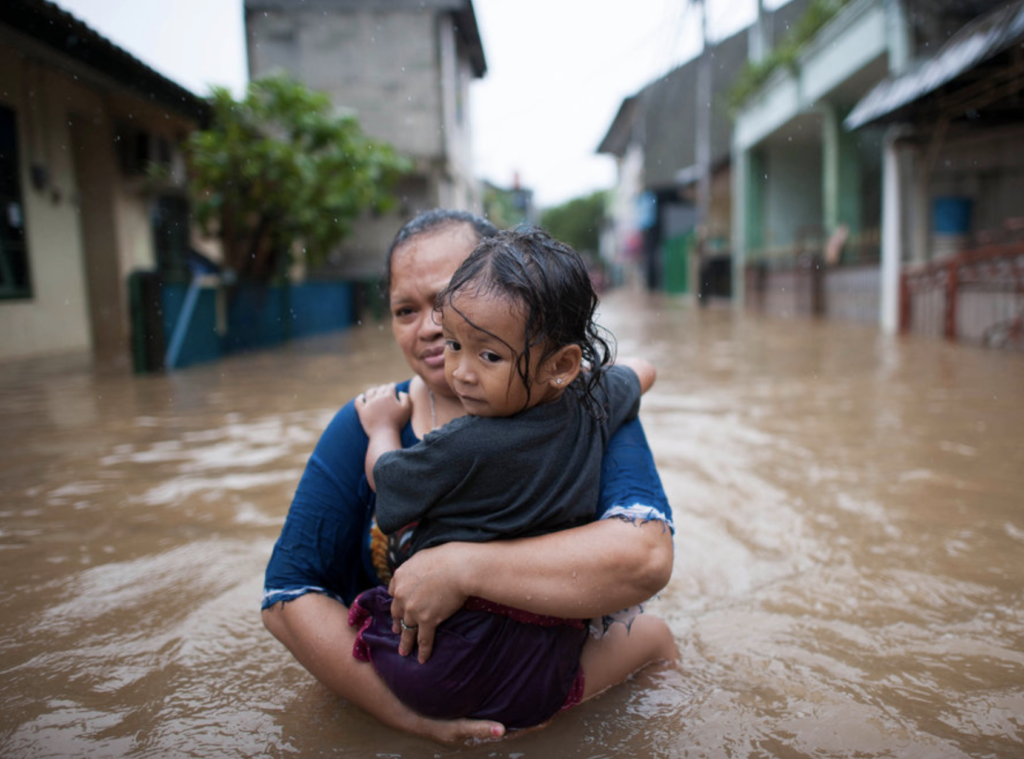
In Bangladesh, salt water flooding over land has made farming impossible in many areas and finding fresh drinking water challenging.
In other parts of the world, the effects of climate change will be most felt by millions of people in terms of access to water. Many countries rely on water from glacier and snow melt both for drinking water and for agriculture. Countries like the Andean nations especially Peru, Chile, Bolivia, and countries in Southeast Asia that rely on glacier meltwater from the Himalayas could be strongly affected, as glacier ice is now melting faster than ever and less snow is tending to fall in some places – meaning there will be less water available in the long term.
Of course, parts of the planet that are already hot will become much more difficult to live in as it becomes hotter. Tropical areas around the Equator are most at risk here. Tropical areas could be pushed towards the limits of what humans can survive if temperatures rise more than 1.5°C above preindustrial levels. Humans can tolerate dry heat better than they can humid heat. Humans are unable to tolerate what is called a “wet bulb temperature” (that’s a measure of heat and humidity together) of over 35°C for very long. In these conditions, the human body is not able to cool itself down by sweating and such conditions can be fatal. Such conditions may have dire consequences for many animals as well. With temperatures increasing everywhere, this could have very serious consequences as about 40% of the world’s population currently lives in tropical areas. This effect of climate change alone could cause a huge refugee crisis with potentially millions of people displaced by climate change by 2050.
Just in terms of temperature rise, perhaps surprisingly, some of the coldest areas have warmed the most due to climate change. Though the global average temperature rise is currently at 1.1°C above preindustrial levels (and Australia’s average temperate is currently 1.44°C higher than when records began) the Arctic is heating up much more dramatically. Between 1971 and 2019, the Arctic’s average annual temperature rose by 3.1°C, meaning it’s heating almost three times faster than the rest of the planet – with drastic consequences on Arctic ecosystems and Indigenous peoples who call the Arctic home. The following video can help us to visualise which parts of the world have heated up most over the past 140 years, and therefore helps us understand which areas are currently most affected by climate change
While some countries might be worse off than others, and some countries might have more capacity to do something to limit the impacts, climate change is affecting ALL OF US and we all have a responsibility to make a positive difference.
I received quite a few questions asking about the most effective way to stop climate change, and how kids can be part of the solution. As you probably know, the key thing that we need to do to help stop climate change is to stop emitting greenhouse gases – particularly carbon dioxide and methane. There are things we can all do to help with this, like driving less, using renewable energy, or tyring to eat local produce that doesn’t have to be transported to Tasmania from far away. But for the really big changes to greenhouse gas emissions that are required to help stop climate change we need our governments to implement policy change. The more we all call for these changes – as a community – the stronger our message to politicians will be.
Another thing we will need to do to help stop climate change is to actively remove carbon dioxide from the atmosphere. There are lots of ways to do this, but some of the simplest and most effective are those that harness the power of nature. Planting more trees, leaving coastal and marine habitats like mangrove forests, seagrass meadows and kelp forests intact. If you’re interested in engineering then there are also some very cool technologies emerging that will help us to pump carbon dioxide out of the atmosphere and back under the ground.

The future of Tasmania and of our planet belongs to kids of today, not to grown ups. Kids ask great questions and they are fantastic at thinking up new ways to solve problems. I think that one of the most important things that kids can do is to keep asking questions and to keep learning to be problem solvers. Keep being curious and caring about climate change!
I have been asked a lot about how climate change works – what is it, how does it happen, and what happens to the Earth with global warming. To answer this I’ll start by talking about the difference between weather and climate. As I’m sure you know, weather is the changes in temperature, rainfall and wind that we see outside from day to day, while climate refers the usual weather of a place. Tasmania has a cool temperate climate overall, but the west coast has a wetter climate than the east coast, and the central regions have a cooler climate than the coast. The Earth also has a climate; Earth’s climate is what you get when you combine all the climates from around the world together.
Climate change is a change in the usual weather of a place. While the weather can change in just a few hours (as it often does in Tassie!), climate change occurs over many years. And in fact the Earth’s climate has always been changing. As I’m sure you know, there have been times in the past when the Earth was much hotter than it is today, and also times when it has been much cooler. But an important difference with climate change caused by human activities is that the change is occurring much, much faster than we have ever seen before.
There are lots of different things that can cause climate to change – volcanic eruptions, changes in the world’s oceans, and changes in the activity of our sun. Climate change caused by humans is due to the gases we release into the atmosphere – particularly carbon dioxide from burning fossil fuels, but also methane and other gases. These gases cause a green-house effect which traps more of the sun’s energy in Earth’s atmosphere and so warms the planet. This warming also causes changes in other features of our climate such as rainfall.
Earth's temperature will keep going up for at least the next 100 years. This will cause more snow and ice to melt and sea levels to rise. Some places will get more rain and others will get less rain. There will be more heatwaves and some places might have stronger storms. The sooner we can stop emitting greenhouse gases and implement solutions to take excess carbon dioxide out of the atmosphere, the better chance we have of minimising the impacts of climate change on our Earth.
We asked a wetland ecologist, a fire scientist, and a Tasmanian Aboriginal person to answer this question. Their answers may surprise you - because climate change is already affecting Tasmania.
Indigenous perspective
Tasmanian Aboriginal People have been seeing climate change effects for well over 15 years now, we have noticed these effects on our traditional cultural resources such as the marineer shells, Mutton Birds, and dog wood trees/saplings.
Marineer Shells are used in traditional shell necklace making (mental health, connection to country). The shells come in a variety of colours and sizes. They are an iridescent metallic green or blue colour and are often representative of status or valued highly as a trade item, depending on the quality, quantity, and shell variety.
Some of the climate change affects which has been seen on the shells are discoloration, spotted corrosion, thinning of the shell walls, and becoming more brittle because of this. Their numbers are reducing, the water they live in has become more acidic, the weeds they live in and on have reduced in number and coverage per hectare, in some cases being pushed out of the area by other weeds.

Mutton birds are being affected by micro plastics in the water, and the blockages are interfering with their energy levels for their long-haul migrations and breeding cycles. Dog wood (used for making spears and clap sticks) saplings are growing at a faster rate and are being shown to not grow as straight nor with the same internal strength qualities that have been apparent for thousands of years.
The main things we need to know about climate change are actually quite straightforward. We need to know that:
- Climate change is caused by an excess of greenhouse gasses trapping heat (solar radiation) in the atmosphere, warming the Earth.
- The climate change we are currently seeing is caused by humans.
- Climate change causes extreme weather (heatwaves, floods, fires, more intense storms and sea level rise).
- Climate change is impacting biodiversity. Many animals may become extinct due to climate change.
- We need to stop extracting and burning fossil fuels (coal, oil, gas) to reduce the impacts of climate change
- Restoring natural vegetation will also help reduce climate change by absorbing carbon dioxide, the key greenhouse gas.
- The science of climate change is settled. Over 99% of scientists agree it is anthropogenic (caused by humans).
- The world has already warmed 1.1°C since we started burning fossil fuels on a large scale (industrialisation.)
- We need to keep temperature rise from climate change to preferably no more than 1.5°C above preindustrial levels to stay within safer limits of global warming.
- As well as trying to prevent more climate change (mitigation) we will have to change the way we live to suit changes to our climate already underway (adaptation).
- It is not too late to stop the most dangerous impacts of climate change – but we need to act fast.
- To have a better chance of staying within 1.5°C of warming, we must cut greenhouse gasses in half by 2030 and achieve net zero (ie: a neutral amount of gases emitted and absorbed) by 2050.
- Everyone has a part to play: countries and their governments, businesses, communities, households and individuals.
We have linked the points above to other answers from the Curious Climate Schools experts so you can read more.











